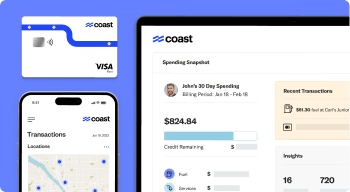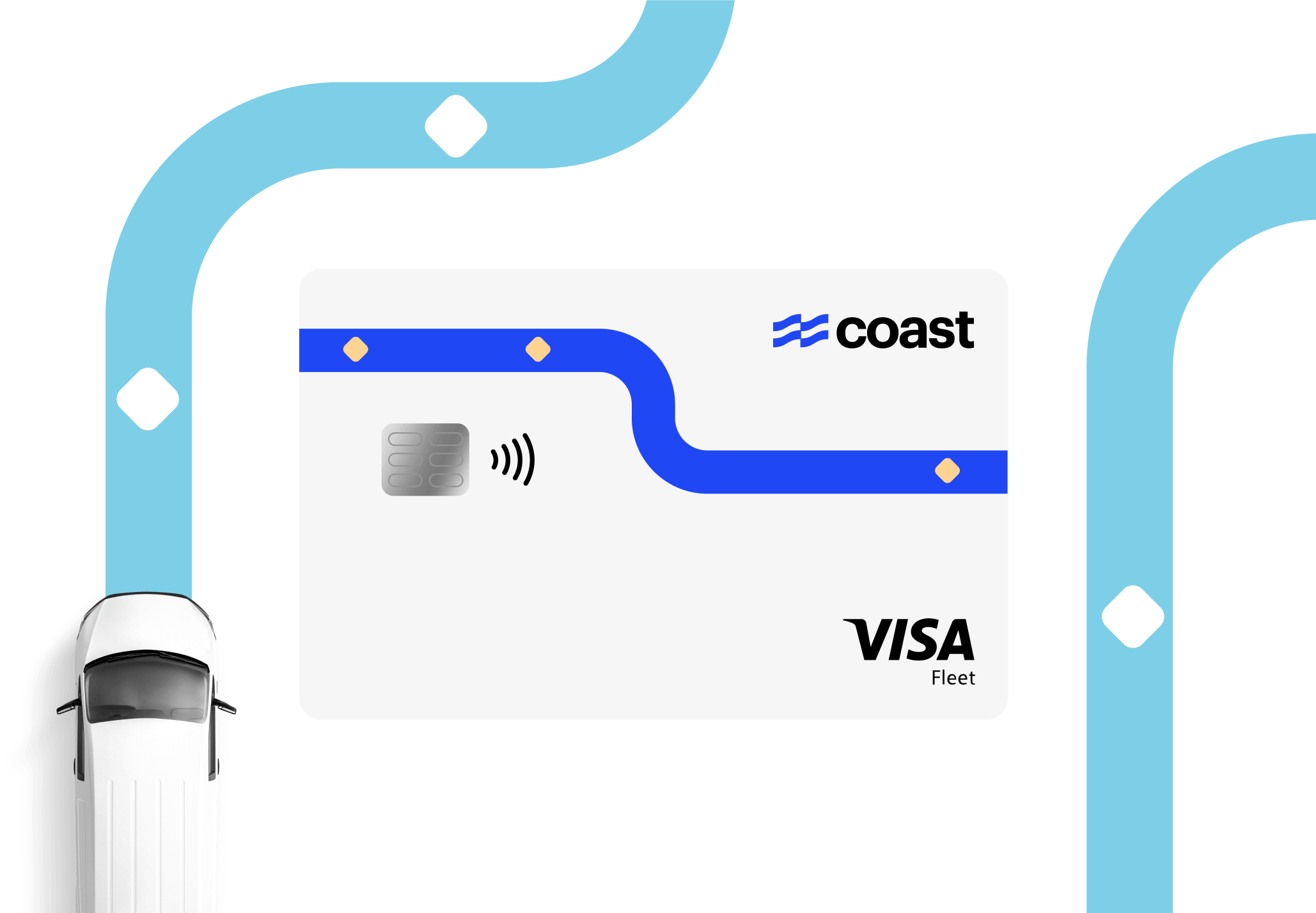As a fleet owner or manager, fleet compliance is vital. You want your fleet vehicles to be in good repair and your drivers to pilot them safely to their destination and back. This not only reflects well on your business, but it’s also the law.
In this article, we discuss fleet compliance and the best practices to keep your vehicles running smoothly trip after trip.
What Is Fleet Compliance?

To understand fleet compliance in its entirety, we first need to back up and examine the word “compliance.” Compliance is defined simply as meeting rules and standards.
So, fleet compliance means meeting the rules and standards that apply to your fleet — be they cars, pickup trucks, semis, tractors, backhoes.
For most vehicles, the United States Department of Transportation (DOT) takes the lead in setting the standards. Their mission is to maintain a safe, efficient transportation system that bolsters the U.S. economy and keeps communities connected from coast to coast.
Early on, the DOT realized that they couldn’t meet these goals without prioritizing safety. As a result, they created the Federal Motor Carrier Safety Administration (FMCSA) to regulate and enforce the safety of the millions of commercial vehicles that navigate American roads every year.
Every day, the FMCSA works with government officials, municipalities, and companies large and small to satisfy a number of broad responsibilities, including:
- Reducing threats to public safety on the road
- Revising and updating safety standards
- Educating vehicle owners and operators about safety regulations that impact their business
- Enforcing DOT standards through inspections and other measures
- Issuing fines and penalties for failure to maintain fleet compliance
- Working with companies and drivers to update safety practices and technology
The rules and regulations that the DOT and the FMCSA set for commercial vehicles help prevent accidents, breakdowns, and driver errors that could seriously impact the way your business runs.
Fines
If a vehicle in your fleet is out of compliance, the DOT and FMCSA can impose hefty fines on your business that can cut into your profits.
In addition to DOT and FMCSA regulations, drivers and fleet managers have to contend with Commercial Vehicle Safety Alliance (CVSA) compliance checks.
If an asset doesn’t reach its standards for operation, your business can accrue some rather serious fines and the vehicle can be removed from service until you complete the necessary repairs or maintenance.
Businesses Subject To Fleet Compliance

The first step in maintaining fleet compliance is knowing whether or not your business is subject to DOT and FMCSA standards.
The current definition of a commercial motor vehicle (CMV) is “any self-propelled or towed vehicle operated on highways and interstates to transport people or goods.”
That’s a pretty general definition and could actually include private commuter vehicles that have nothing to do with commercial operations. As such, the DOT and FMCSA added other qualifications to the definition to make the distinction clearer.
If any self-propelled or towed vehicle operated on highways and interstates to transport people or goods meets at least one of the following requirements, it is considered a commercial vehicle:
- The vehicle weighs over 10,001 pounds (including load)
- The vehicle is used commercially (i.e., for compensation) to transport eight or more passengers, including the driver (e.g., an airport shuttle)
- The vehicle is used non-commercially to transport 15 or more passengers, including the driver (e.g., a school bus or daycare van)
- The vehicle transports hazardous material in quantities requiring the vehicle to be placarded
Any business, then, that operates one or more vehicles that are considered commercial motor vehicles by the standards in the list above is subject to the fleet compliance laws put forth by the Department of Transportation and the Federal Motor Carrier Safety Administration.
Once you’ve identified that your vehicle or vehicles fall into the CMV category, you can then take steps to ensure that you abide by all fleet compliance laws.
Let’s discuss the best practices for doing this.
Fleet Compliance Best Practices
Since most fleets consist of small trucks, vans, and other vehicles for transporting large quantities of goods or people, we’ll focus on the best practices that apply to these assets.
If your fleet is made up of other types of rolling stock, visit the Department of Transportation’s website or consult with your local DMV for more details.
1) Monitor Hours Of Service
Driver fatigue is among the leading causes of accidents involving commercial vehicles on U.S. roadways. To combat this unfortunate trend, the DOT has placed restrictions on the number of hours a single driver can operate a vehicle without a break.
Since fatigue can occur anytime, anywhere, and under any circumstances, hours-of-service (or HOS) is the single most important variable that managers can prioritize when it comes to fleet compliance.
According to the FMCSA, the most basic regulation states that:
- Property-carrying drivers may drive a maximum of 11 hours after 10 consecutive hours off duty
- Passenger-carrying drivers may drive a maximum of 10 hours after 8 consecutive hours off duty
More regulations do exist — including such caveats as a 14-hour limit, 30-minute driving break, sleeper berth provision, adverse driving conditions, and a short-haul exception — so be sure to check the FMCSA website for more information.
To make HOS fleet compliance easier to track and maintain, DOT standards include the need for an electronic logging device, driver training and diligence, and telematics within the vehicle itself.
2) Maintain Driver-Vehicle Inspection Reports

Ensuring that your fleet compliance efforts include maintaining safe and roadworthy vehicles is almost equally as important as monitoring drivers’ hours of service.
Your fleet takes a lot of abuse while on the road. That abuse can add up over time and cause a breakdown that can bring your business to a halt.
To help avoid equipment malfunctions, the FMCSA requires that all drivers fill out a Driver-Vehicle Inspection Report (DVIR) before and after every trip (or at the beginning and end of the workday).
DVIRs cover the essential systems that allow for safe and effective vehicle operation, including:
- Lights
- Tires and rims
- Rear- and side-view mirrors
- Steering systems
- Brake systems
- Fifth wheel and connection points
- Safety and emergency equipment
- Windshield wipers
DVIRs also provide a record of the wear-and-tear your assets experience and the repairs you provide to keep them safe and functional.
Unfortunately, many drivers take shortcuts when it comes to filling out DVIRs — sometimes not even doing the inspection — because the old paper forms are frustrating to use.
To combat this lack of oversight, fleet management and software and telematics companies have introduced electronic Driver-Vehicle Inspection Reports (eDVIRs) that drivers can fill out on their phones and whose data can be stored and accessed in the cloud.
3) Abide By The International Fuel Tax Agreement
Forty-eight of the U.S. states (excluding Alaska and Hawaii) and 10 Canadian provinces enacted the International Fuel Tax Agreement (or IFTA for short) in order to track where commercial vehicle fuel taxes go.
Under the IFTA, CMV drivers must record:
- Miles driven
- Fuel purchased
- Purchase locations
Vehicle operators or fleet compliance managers submit these records to their local IFTA office every quarter. Then, based on the number and location of miles driven, the IFTA office distributes fuel taxes to each state and province.
Most fleets rely on telematics to help with IFTA compliance, but these systems can fail.
The Coast fuel card provides a level of tracking and reporting that managers need — all transaction details, including the number of gallons, fuel grade, purchase price, and location of fill-ups are instantly recorded in an easy-to-read online platform that makes maintaining fleet compliance even easier.
4) Keep Compliance, Safety, And Accountability Scores Up To Date
In addition to monitoring driver hours, maintaining driver-vehicle inspection reports, and abiding by the International Fuel Tax Agreement, fleet compliance also includes Compliance, Safety, and Accountability (or CSA) scores.
CSA scores — that range from zero (the best) to 100 (the worst) — are based on the following seven categories:
- Vehicle maintenance
- Frequency or intensity of collisions (the Crash Indicator)
- Driver fitness
- Compliance with hours-of-service requirements
- Controlled substance or alcohol
- Unsafe driving
- Hazardous material compliance
The categories listed above are assessed at roadside inspection points along various major highways across the United States. If a driver and their vehicle fall within an acceptable CSA score, your business will not receive any points.
If, however, the driver and the vehicle fall outside of an acceptable CSA score, they can be taken out of service and your business can be penalized.
Coast Provides The Data You Need

As we’ve discussed throughout this article, tracking and reporting are essential for fleet compliance. Coast can help.
Our fuel card provides real-time expense tracking, line-item detail, and a powerful online management platform that puts your entire fleet in the palm of your hand and provides full visibility of every dollar spent.
Combined with modern tracking software and telematics, Coast makes fleet compliance and management easier than ever before.
For more information on how Coast can help you control fleet costs and streamline your fleet management program, visit CoastPay.com today




